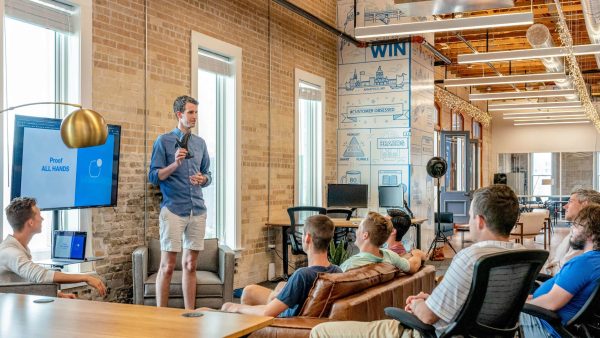Organizations use learning and development to build a workforce tailored to their organizational goals and values. An adaptable and flexible LMS is key to meeting these goals. Determining whether an LMS meets this standard requires a renewed definition of flexibility and adaptability in the modern workplace.
In short, a flexible LMS serves an organization’s development needs, can be personalized to goals, and contributes to an evolving, sustainable learning environment.
Traditional Methods of Measuring an LMS’s Flexibility: Customization VS Configuration
Traditional definitions of an LMS’ flexibility measure customization against configuration to determine which system best suits an organization’s needs. However, configuration, which concerns the visual design of an LMS, and customization, which involves changes in its programming, are not the end-all definitions of what makes an LMS flexible for a modern business.
A truly flexible LMS responds to industry changes to keep learning and development efficient in changing conditions. One example is the surge of remote positions following the pandemic, which has led to widespread globalization that continues to impact the cost of scaling employee development.
With more of a company’s budget devoted to adapting to post-pandemic standards of recruiting and retention in a more digitally-minded economy, less money is available for learning and development teams. This makes an accurate assessment of an LMS’s flexibility for the modern workplace more significant than ever before.
Additional Measurements of Flexibility
A flexible LMS maintains an efficient learning and development structure within the new conditions brought on by these changes. At the same time, it maintains a company’s image, retains employees, and creates a sustainable learning environment within an organization’s existing infrastructure. It does this first by crafting a user experience that is effective for both learners and admins, including ease of use in navigating announcements and courses, clear messaging and notification systems, and effective content that balances a company’s existing identity with its intended development goals.
The most effective LMS showcases an organization’s branding, culture, and structure to make employees feel they are in a dedicated workspace even while working remotely on the company’s LMS. This allows the LMS to support organizational values and goals while sustaining a continuous working environment. In 2023, this means not only encouraging efficient learning but also continuously improving the accessibility of learning resources and the availability of safety and diversity training.
Examples of Flexibility
An LMS that maximizes adaptability and flexibility has features that expand its functionality and improve its user experience. These include:
- Custom user attributes enable admins to create custom roles to separate learners within an organization and assign them separate learning courses, whether by department, seniority, start date, or another chosen attribute. This allows an LMS to adapt to an organization’s existing structure.
- Homepage configuration includes the verbiage, themes, icons, colors, and logos that represent an organization’s values and branding. Custom pages can highlight the information that an organization wants learners to focus on by highlighting important tasks in widgets, uploading login page images for different workspaces, and more. At the same time, custom URLs and custom CSS can personalize the system behind the scenes.
- Custom announcements deliver important information with mass updates, enabling admins to update groups separately or communicate with the whole organization at once. This facilitates clear communication within an organization by allowing admins to keep the users they want to reach updated on their courses and instructors without bogging the system down with messages that not everyone needs to see.
- Separate Workspaces create unique environments for each entity within an organization, simplifying multi-organizational management. Each workspace can have its own branding and content to reflect that entity’s values and goals.
The Takeaway for Businesses
A flexible and adaptable LMS can make life easier for an organization by improving communication with employees, making learning more efficient, and keeping remote workers within a refined company space that your administrators can efficiently manage. An LMS with both customization and configuration options allows businesses to adapt to modern employee standards and make life easier for their admins in a post-pandemic industry, all while retaining their corporate image and existing company infrastructure.


